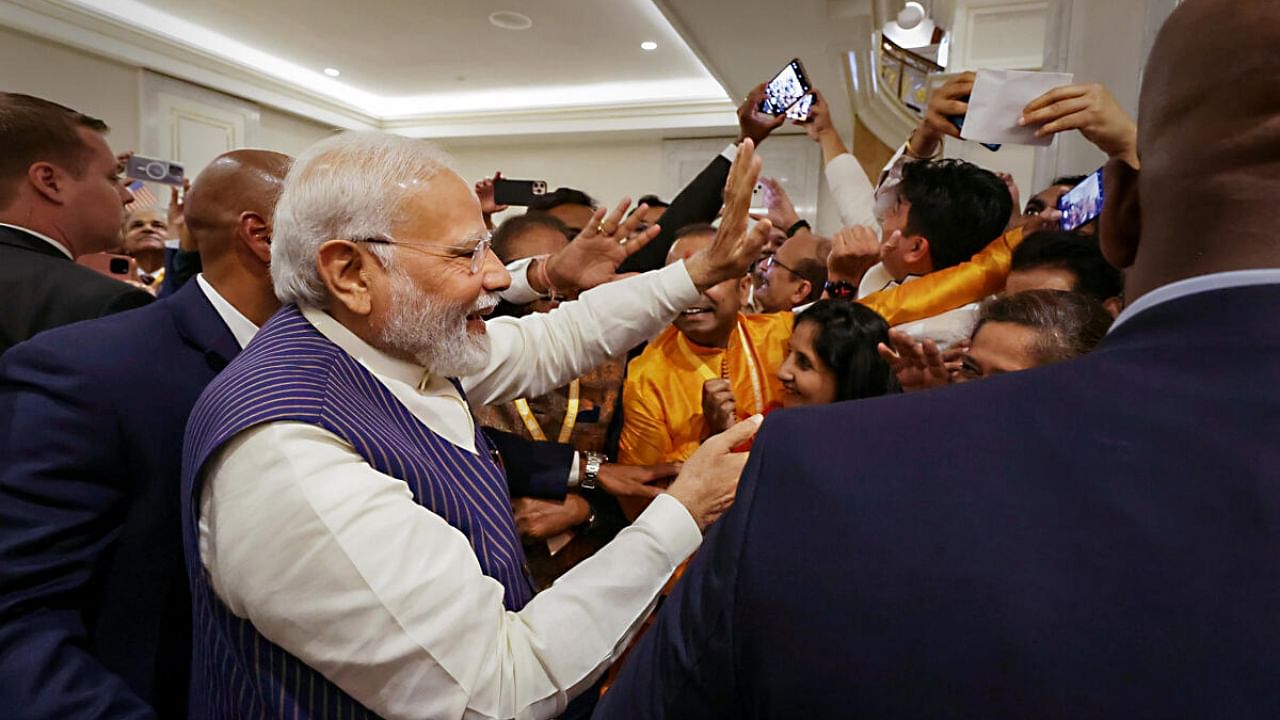
Recently, when former United States President Donald Trump’s arraignment dominated the discourse in the US media, I received a call from a foreign affairs editor of a major media outlet in New Delhi, asking “how Trump’s arrest would affect the US-India relationship”. Not only was the analysis wrong, but it also revealed a facile understanding of geopolitics and of the bipartisan relationship.
To back the line of thought, the editor said “but what about ‘Ab Ki Baar, Trump Sarkar’”, alluding to Prime Minister Narendra Modi’s speech in Houston, Texas, during a 2019 rally. I mustered the courage to say, “it doesn’t affect the relationship”. A line written by a speechwriter to entertain diaspora crowds cannot override two decades of concrete policy building on Raisina Hill and Foggy Bottom.
Not since Modi’s first visit as Prime Minister in 2014, has a visit been covered with such extensive fanfare as Modi’s current three-day visit to the US. While Modi has made many official visits and addressed diaspora throngs, this will be a historic first State visit to the US.
To put that into perspective, a US State visit is a rare and coveted honour for Washington’s closest allies and partners. It’s a sense of Washingtonian affection for the ties with that said country and respect for its standing in the global order. This also only the third time a State visit has been offered to an Indian dignitary: the earlier two were for Prime Minister Manmohan Singh in 2009, and for President Sarvepalli Radhakrishnan in 1963.
Modi will also address a joint session of the US Congress. With his address, Modi will become the only Prime Minister of India to address both chambers of the US Congress twice, following his earlier address in 2016, where he famously said that the US and India have ‘overcome the hesitations of history’. He will also be among a handful of world leaders, like Winston Churchill and Nelson Mandela, to have done so on more than one occasion.
Not since Indira Gandhi has a sitting Prime Minister met three US Presidents. It's not just the optics of a Democratic Veep and Republican House Speaker, seated behind Modi to add to the optics of the bipartisan nature of the relationship. Since the 1990s, every permutation between a Democrat and a Republican leader in the US and a Congress and a BJP leader in India has worked out as a testimony that the bilateral ties are based on strong policies more than personalities.
Washington and New Delhi have a deep strategic partnership, that is both bipartisan in nature and one that is pervasive to working across an eclectic mix of sectors. In Washington, Modi’s visit will elevate the strategic partnership to new heights. Of importance is a strategic clean energy partnership, with India working on its hydrogen economy and moving away from its dependence on fossil fuels, as US businesses look to invest in India’s clean energy economy.
On the technology front, both sides have signed the Initiative for Critical and Emerging Technology (iCET), where the convergence will include advanced areas such as quantum computing, AI, drone technology, and even space.
The COVID-19 pandemic accentuated healthcare co-operation as India’s pharmaceutical prowess and US logistical capabilities saw the last-mile delivery of cheap and affordable vaccines across emerging markets. The focus for both Washington and New Delhi is on rebuilding resilient new supply chains that have been upended by the pandemic. There is the question of expediting visas, as bottlenecks led to a backlog, lest it was to affect the strong educational bonds with over 200,000 Indian students across US universities.
This visit is substance over just symbolics. An expected announcement is one around the jet engines deal, as New Delhi seeks a transfer of technology. A possible jet engine deal will help to power advanced light combat aircraft. If such a deal were to fructify, it would make India the fifth country in the world to manufacture hot engines for aircraft. New Delhi also seeks to purchase high-altitude armed predator drones. This accomplishes a few goals. On one hand, it consolidates the defence and tech relationship. It secures both New Delhi’s borders and Washington’s containment strategy against a bellicose Beijing, and from Washington’s perspective, gets New Delhi to wean away from its archaic defence reliance on Moscow’s supply chains.
Despite the defence element, the diaspora is the secret sauce of the relationship. The ubiquity of the Silicon Valley CEOs and the Indian doctors, and the annual Indian spelling bee champion reaffirms that the DC-Delhi diplomacy is catalysed by the strength of the diaspora and deep people-to-people connect.
(Akshobh Giridharadas is a Washington DC-based public policy professional, and visiting fellow, Observer Research Foundation.)
Disclaimer: The views expressed above are the author's own. They do not necessarily reflect the views of DH.